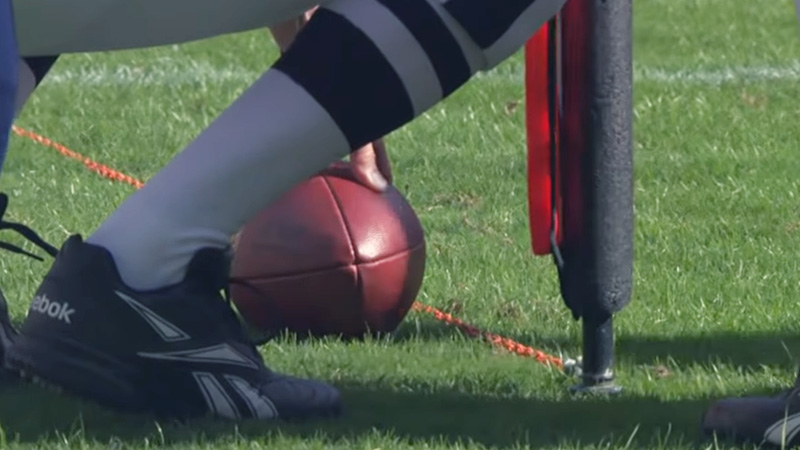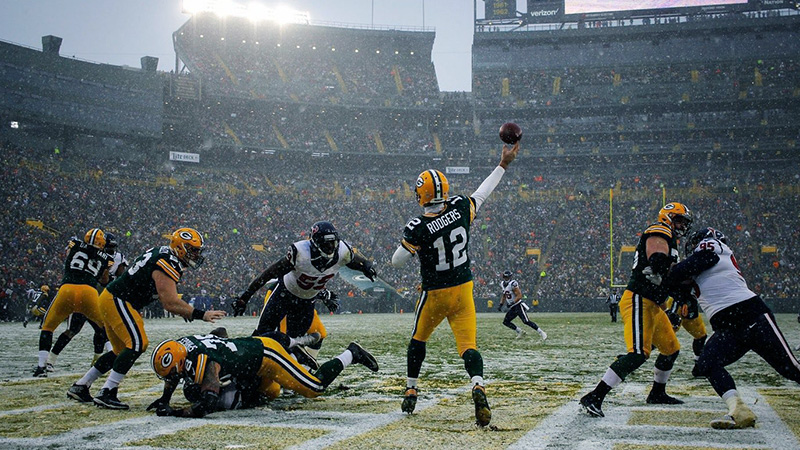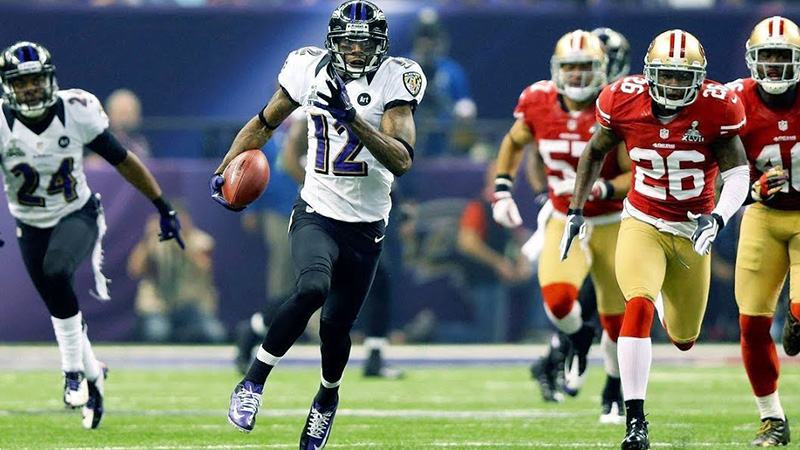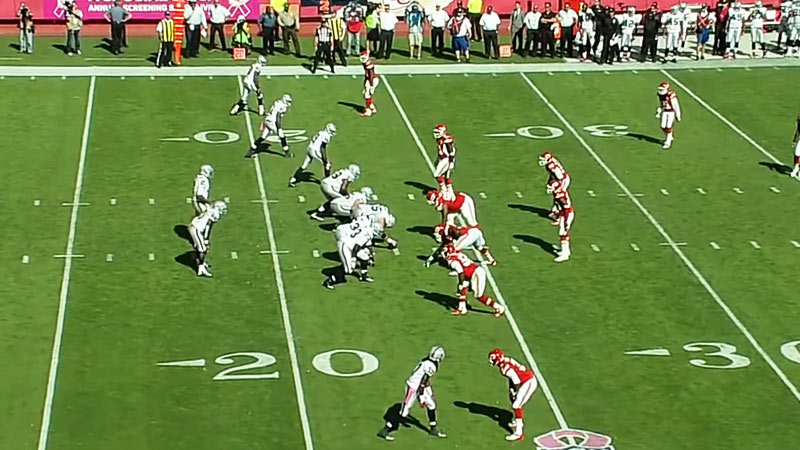If you are a fan of American football, you probably know that a team has four chances (called downs) to move the ball 10 yards forward. If they succeed, they get a new set of four downs.
If they fail, they have to give up the ball to the other team. But sometimes, things go wrong and a team finds itself in a situation where they need to gain a lot of yards in one play. This is called a long down and distance situation, and it can be very challenging for the offense.
But what is the longest down-and-distance situation that a team has ever faced in NFL history? You might be surprised by the answer. In this blog post, we will look at some of the most extreme cases of long down and distance situations in NFL history and how the teams involved handled them.
How Does the NFL’s Down System Work?

The NFL’s down system is a fundamental aspect of American football that regulates how teams advance the ball down the field and maintain possession. Here’s how it works:
First Down
Each offensive possession begins with a first down, typically referred to as “first and 10.” This means that the offense has four attempts (or downs) to advance the ball at least 10 yards down the field to earn another set of downs. The objective is to move the ball closer to the opposing team’s end zone.
Yards to Go
The “yards to go” is the distance the offense must cover to achieve a first down. It is usually 10 yards, but it can be more or less depending on the result of previous plays or penalties. For example, if the offense gains 3 yards on first down, they will face a second-and-7, meaning they need to cover 7 more yards to get a first down.
Advancing the Ball
The offense has several options to advance the ball:
- Running Plays: Running backs carry the ball and attempt to gain yards by navigating through the defense. Offensive linemen block to create running lanes.
- Passing Plays: The quarterback throws the ball to a receiver downfield. Receivers try to catch the ball and advance it after the catch. Offensive linemen protect the quarterback from the opposing defense.
Completion and Incompletion
If a pass is caught by a receiver and they gain yards, the offense advances. However, if a pass falls incomplete (not caught), the offense loses that play, and it counts as one of their downs.
Incompletions typically result in the next down with the same yards to go. For example, if it’s second-and-7 and a pass falls incomplete, it becomes third-and-7.
Penalties
Penalties can affect the down and distance situation. For example, if the offense is penalized for holding, they will lose yardage, and the yards to go for a first down will increase. Conversely, if the defense commits a penalty against the offense, the offense may gain yardage and potentially a new set of downs.
Turnovers
If the offense fails to advance the ball the required distance within four downs, possession of the ball is turned over to the opposing team at the spot of the last play. This change of possession is often referred to as a “turnover on downs.”
Fourth Down Decision
On the fourth down, teams face a crucial decision. They can choose to punt the ball to the opponent to gain a better field position, especially if they are deep in their territory.
Alternatively, they can attempt to convert the necessary yards for a first down. If they fail to convert, the opposing team takes over with the ball at the spot where the fourth-down play ended.
What Is The Longest Down To Go In NFL History
The longest down to go in NFL history is a record held by the Pittsburgh Steelers, who faced a 3rd and 50 situation against the New England Patriots in 2002.
They managed to convert the first down with a 55-yard pass from Tommy Maddox to Hines Ward, which helped them win the game in overtime.
The play was one of the most remarkable and dramatic moments in NFL history.
What is the longest passing play in NFL history?

The longest passing play in NFL history was a 98-yard touchdown pass by Tom Brady to Randy Moss against the Baltimore Ravens on November 19, 2007.
The longest passing play in NFL history was a 99-yard pass by Eli Manning and Victor Cruz. This play occurred on November 19, 2011.
What’s the longest 4th down ever?
In 1994, Bill’s Rob Johnson ran 40 yards for a fourth down conversion in the Vikings vs Colts game. The longest 4th down conversion since then happened in the 2018 NFL playoffs when Peyton Manning threw an interception on 3rd and 50 to seal the victory for the Denver Broncos over the Seattle Seahawks.
Other notable 4th downs include: Terrell Owens’ 91-yard touchdown catch against Green Bay Packers in 2003; Donovan McNabb’s 5-yard scramble to convert against Tampa Bay Buccaneers in 2004; and Tony Romo’s 64-yard connection with Jason Witten against Baltimore Ravens in 2016.
Fourth downs are converted by converting one of two situations – first when it is third or fourth down and within 10 yards of a goal line, or second if there is less than 2 minutes left during regulation play and teams are playing under 7 points per possession.
What is the biggest comeback in football history?
The Buffalo Bills are the team with the biggest comeback in football history. They went down 28-3 to the Houston Oilers and came back to win 41-38 on a last minute field goal by Scott Norwood.
The AFC Wild Card game between the Pittsburgh Steelers and Kansas City Chiefs is also worth mentioning – both teams were down 30-0 at halftime but they managed to come back and tie the game in regulation, which led to a dramatic overtime period where Kansas City scored first only for Antonio Brown to catch a touchdown pass from Ben Roethlisberger in extra time for Pittsburgh, giving them their sixth Super Bowl win (they’ve been playing since 1933).
Lastly, we can’t forget about Frank Reich’s Philadelphia Eagles who were down 21 points against New Orleans Saints with just over two minutes remaining in the fourth quarter of Week 14 – however, Nick Foles led an epic comeback victory by throwing four touchdowns passes as well as running for another one late in the game.
What’s the biggest 4th quarter comeback in the NFL?
In 1989, the San Francisco 49ers came back from a 21-3 deficit to win the Super Bowl. Joe Montana led the way with 343 yards and four touchdowns in the fourth quarter alone.
The Philadelphia Eagles made it all the way to the NFC Championship game before falling to Washington Dc in 1994. This year, Kansas City is facing off against New England in Sunday’s AFC title game – could they make history again?
Is it possible to throw a football 100 yards?
Yes, it is possible to throw a football 100 yards. To achieve this distance, you’ll need strong arm strength and hand-eye coordination. You’ll also need power output to send the ball far distances.
Throw Distance can be increased by practicing regularly and increasing your throwing velocity over time.
Has There Ever Been a 100-yard Touchdown?

Yes, there have been instances of 100-yard touchdowns in NFL history. A 100-yard touchdown typically occurs on kickoff returns or interception returns when a player starts from their own end zone and runs the entire length of the field to score a touchdown.
One famous example is Jacoby Jones’ 108-yard kickoff return for a touchdown during Super Bowl XLVII in 2013 while he was playing for the Baltimore Ravens. This is officially the longest play in NFL history, as it exceeded the standard 100 yards.
These plays are relatively rare due to the sheer distance that needs to be covered and the fact that players on the opposing team are actively trying to prevent such long runs. Nonetheless, when they do happen, they become memorable moments in NFL history.
What QB has the most 4th down conversions?
A 4th down conversion is when a team successfully gains a first down or a touchdown on a 4th downplay. According to the NFL statistics, the quarterback who has the most 4th down conversions in his career is Peyton Manning,
who converted 79 of his 161 drop-backs in these situations, for a success rate of 49.07 percent. He is followed by Tom Brady, who has 46 career 4th down conversions, and Ben Roethlisberger, who has 41.
To Recap
The NFL’s down system is at the heart of every football game, dictating the ebb and flow of the sport. However, one remarkable moment stands out in its history—the unprecedented first-and-50 scenario that occurred during a game between the Denver Broncos and Buffalo Bills in 1970.
This extraordinary occurrence, resulting from a series of penalties, remains a testament to the unpredictability and drama that define the NFL. It reminds us that in football, as in life, anything can happen on the field.
We invite you to share your thoughts on this historic moment, which continues to captivate football enthusiasts and exemplifies the magic of the game.







